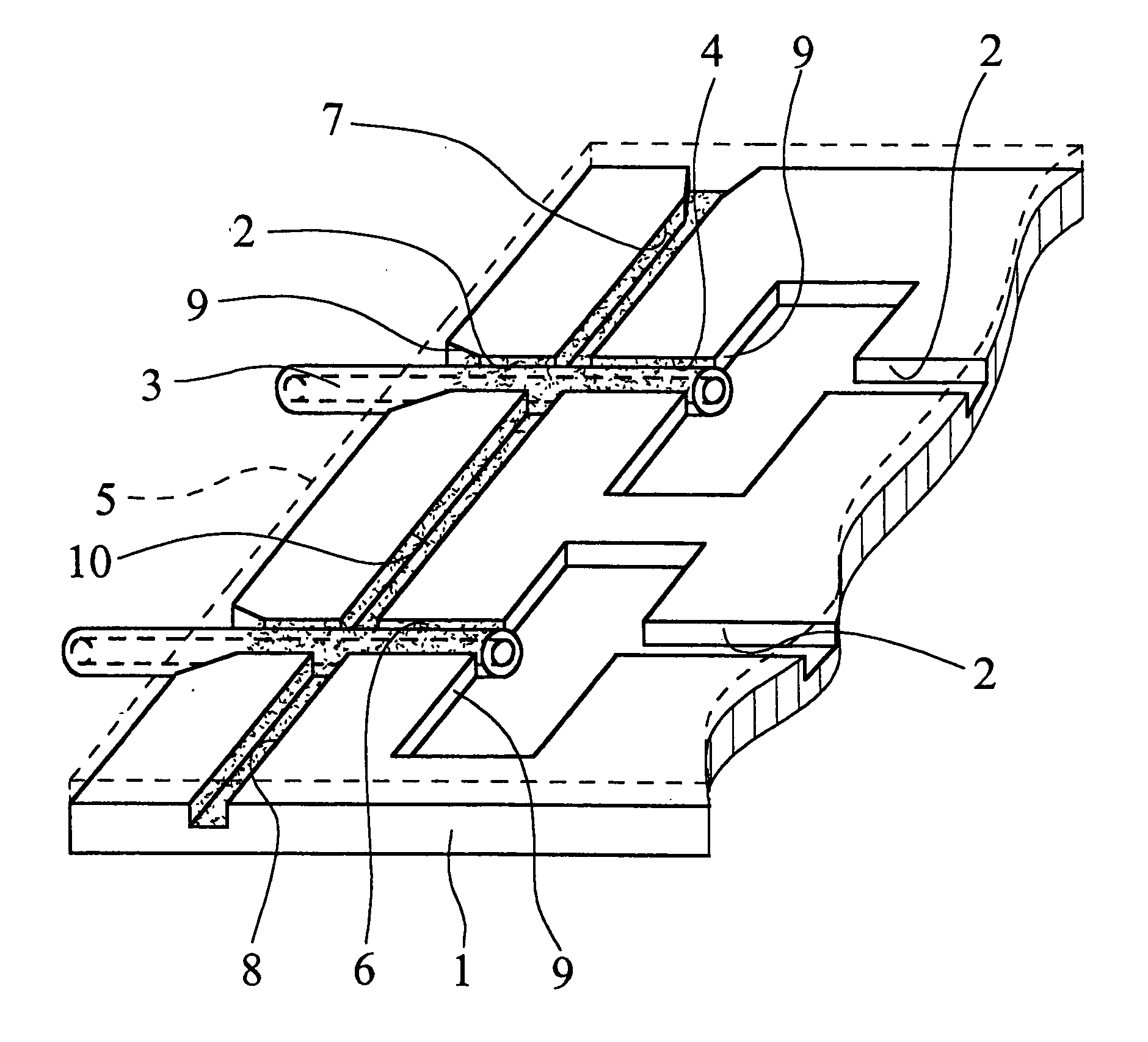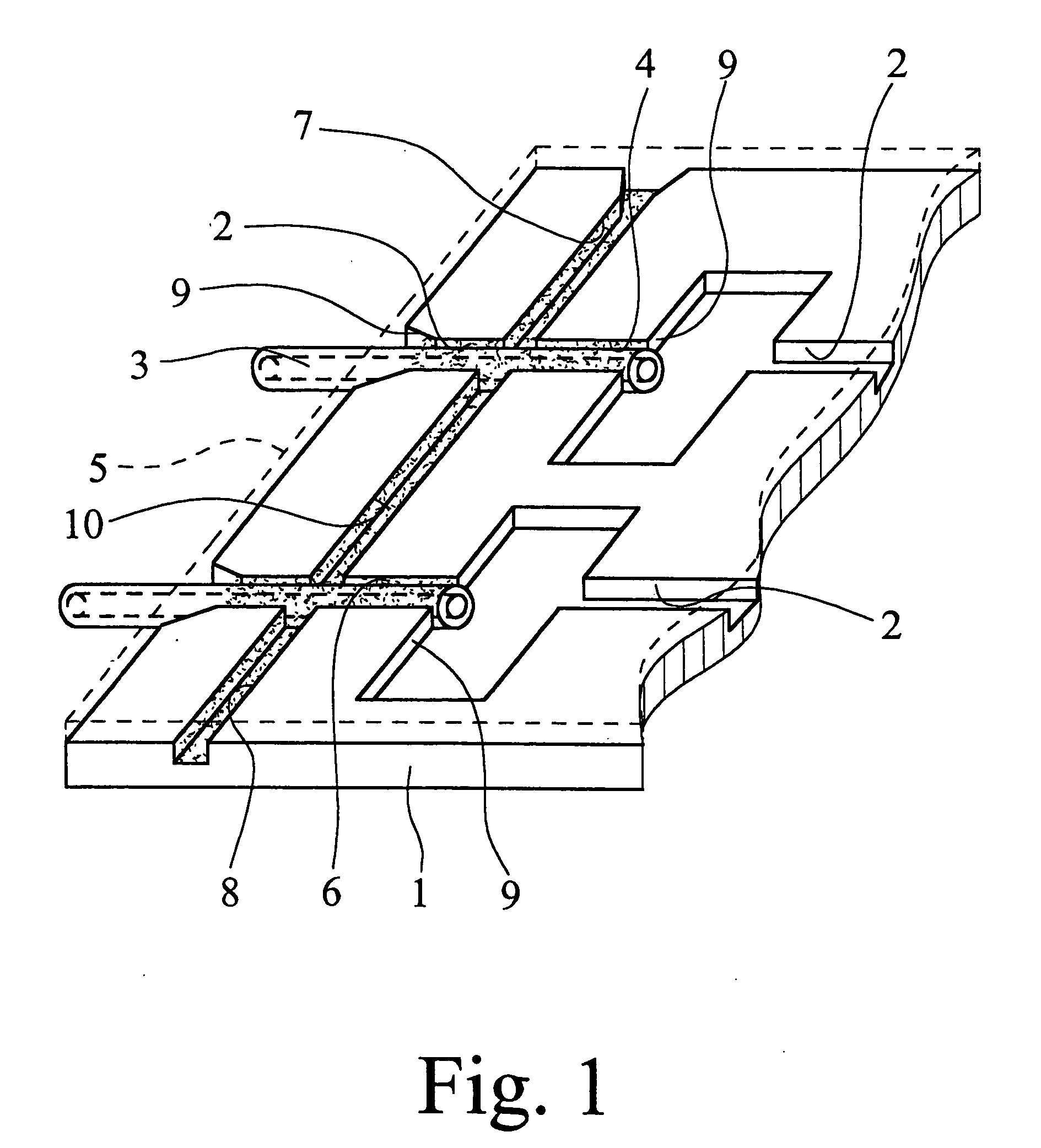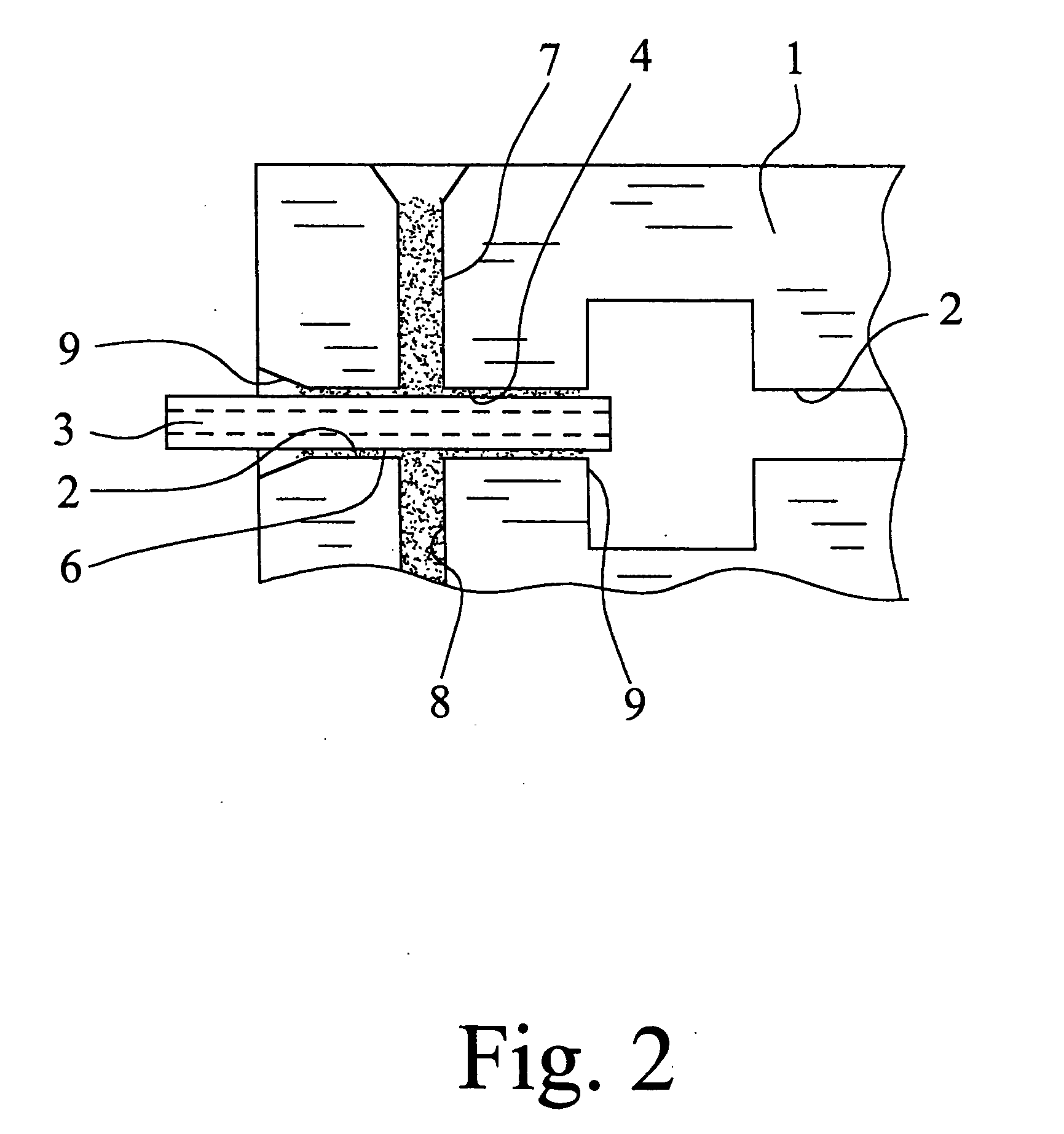Process and device for coupling hollow fibers to a microfluidic network
a microfluidic network and hollow fiber technology, applied in the direction of fluid speed measurement, optical light guides, photomechanical treatment, etc., can solve the problems of inability to ensure the optimal positioning of hollow fibers in channels, inability to ensure the optimal positioning of hollow fibers, and inability to ensure the effect of hollow fiber positioning
- Summary
- Abstract
- Description
- Claims
- Application Information
AI Technical Summary
Benefits of technology
Problems solved by technology
Method used
Image
Examples
Embodiment Construction
[0034] The microfluidic system which is shown in FIG. 1 is composed of a microfluidic network with a microstructure carrier 1 with at least one channel 2 and a microfluidic hollow fiber 3, one end of which is inserted into the channel 2 and which discharges at its end face into the channel 2. The outside dimensions, especially the outside diameter, of the hollow fiber 3 are matched to the inside dimensions, especially the width and the depth, of the channel 2, such that capillary channels 4 are formed between the hollow fiber 3 and the walls of the channel 2, especially in the gussets which remain in the angles. Additionally, the network is covered with a cover film or plate 5 which is fixed on the microstructure carrier 1 and which closes the channel 2. The capillary channels 4 are filled by a fluidically sealing cement 6. The cover film 5 is represented in FIG. 1 only by a broken line and not to scale, and is a hot sealing film of a polymer plastic, here, which is permeable to UV ...
PUM
| Property | Measurement | Unit |
|---|---|---|
| Width | aaaaa | aaaaa |
| Width | aaaaa | aaaaa |
| Width | aaaaa | aaaaa |
Abstract
Description
Claims
Application Information
 Login to View More
Login to View More - R&D
- Intellectual Property
- Life Sciences
- Materials
- Tech Scout
- Unparalleled Data Quality
- Higher Quality Content
- 60% Fewer Hallucinations
Browse by: Latest US Patents, China's latest patents, Technical Efficacy Thesaurus, Application Domain, Technology Topic, Popular Technical Reports.
© 2025 PatSnap. All rights reserved.Legal|Privacy policy|Modern Slavery Act Transparency Statement|Sitemap|About US| Contact US: help@patsnap.com



